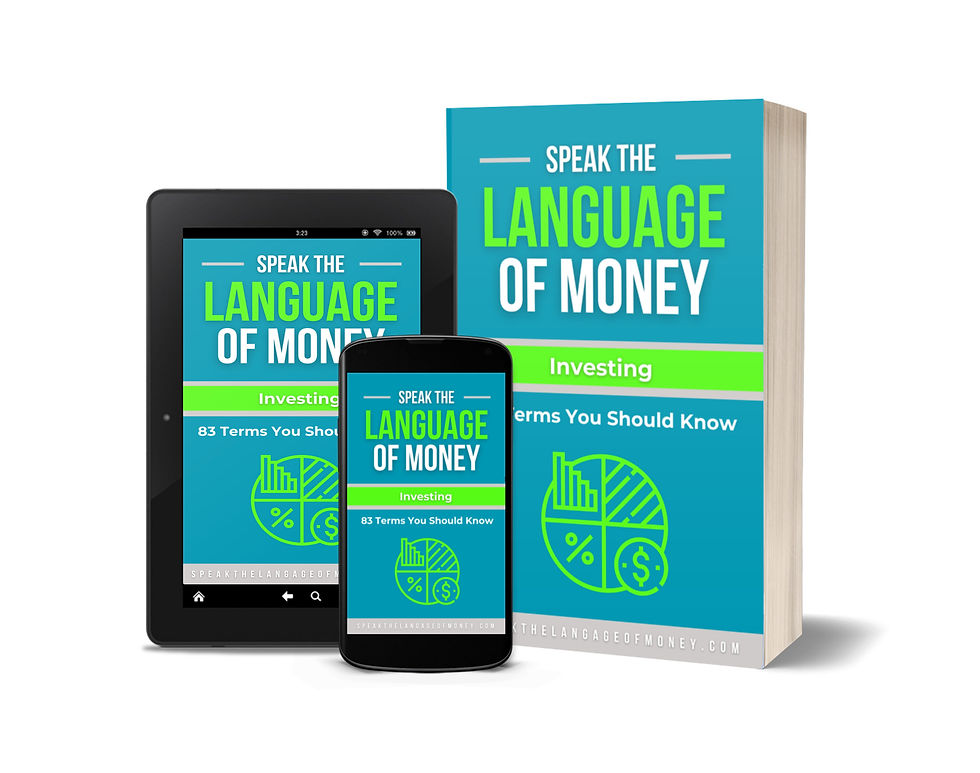Financial Word of the Day: Stop Order
- Larry Jones

- Aug 20
- 3 min read
Updated: Sep 25

Definition of Stop Order
Want your investments to come with an “emergency brake”? That’s what a stop order does. It’s an instruction you place with your broker to buy or sell a security once it hits a specific stop price. When the stop price is reached, your order is activated—usually as a market order—to help you lock in gains or limit losses without staring at charts all day.
Why a Stop Order Matters
Markets move fast. A stop order automates your defense plan: “If this falls to X, get me out.” Or, “If this rises to Y, get me in.” It keeps emotion out of trading decisions—no panic-selling at the bottom or FOMO-buying at the top (at least a little less).
Core Types of Stop Orders
Sell Stop (Stop-Loss):You own the stock at $50. You set a stop at $45. If price drops to $45, a sell market order triggers to exit the position and limit downside.
Buy Stop:You want to buy only if momentum continues. Stock is $50, you set a buy stop at $55. If it reaches $55, a buy market order triggers and you enter as it’s breaking out.
Stop-Limit:Same trigger idea, but instead of converting to a market order, it becomes a limit order. Example: Stop at $45 with a sell limit at $44.50. You’ll only sell at $44.50 or better. The upside: price control. The downside: if it gaps through your limit, you might not get filled (ouch).
Trailing Stop:A moving guardrail that follows price by a set amount or percentage (e.g., 10% below the peak). If the stock keeps climbing, the stop climbs with it; if the stock reverses by that trail amount, it triggers.
A Quick Example
You bought shares at $30. They’ve run to $38. You set a trailing stop 10% below the current price. If the stock dips to $34.20 (10% off $38), your sell market order fires, helping you protect most of your gain. If the price keeps running to $42, your stop automatically trails up to $37.80. No babysitting, just discipline.
Pros and Watch-Outs
Pros
Automates risk management (sleep better).
Helps prevent “I’ll sell tomorrow” procrastination.
Useful for both protection (stop-loss) and confirmation (buy stop).
Watch-outs
Slippage: When triggered, stop market orders fill at the best available price—which might be worse than your stop price in a fast or thin market.
Gaps: Overnight news can push price past your level before the market opens. You’ll likely fill at the open price, not your stop.
Stop-Limit Risk: Great price control, but you might not get filled when you need it most.
When to Use Them
You have a target risk per trade (e.g., “I’ll risk 2% of my account on any one position”).
You want to protect open gains without selling too soon (hello, trailing stops).
You want to buy only if a stock proves strength above a key level (buy stop).
Bottom Line
A stop order is your pre-committed plan in a world of hot takes and cold feet. Set your levels when you’re calm, let the automation do its job, and keep your portfolio focused on math—not mood. That’s how you build wealth on purpose, not by accident.






Comments